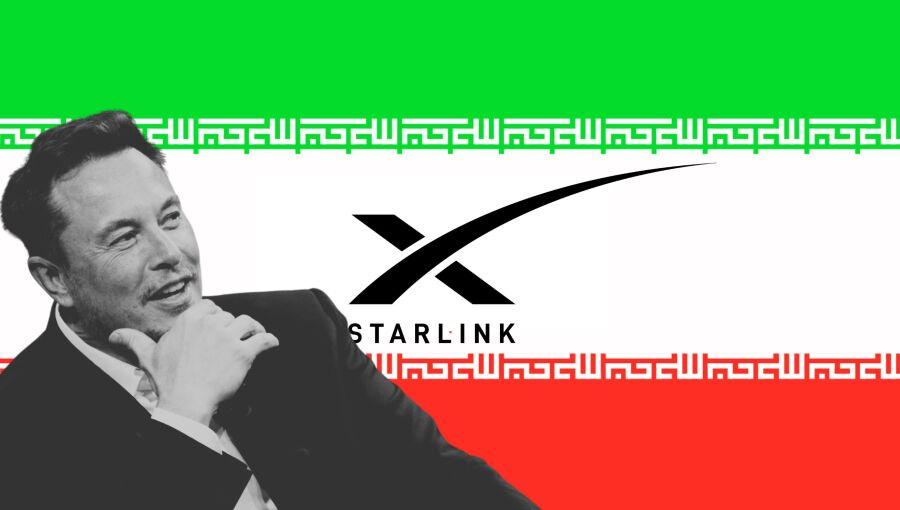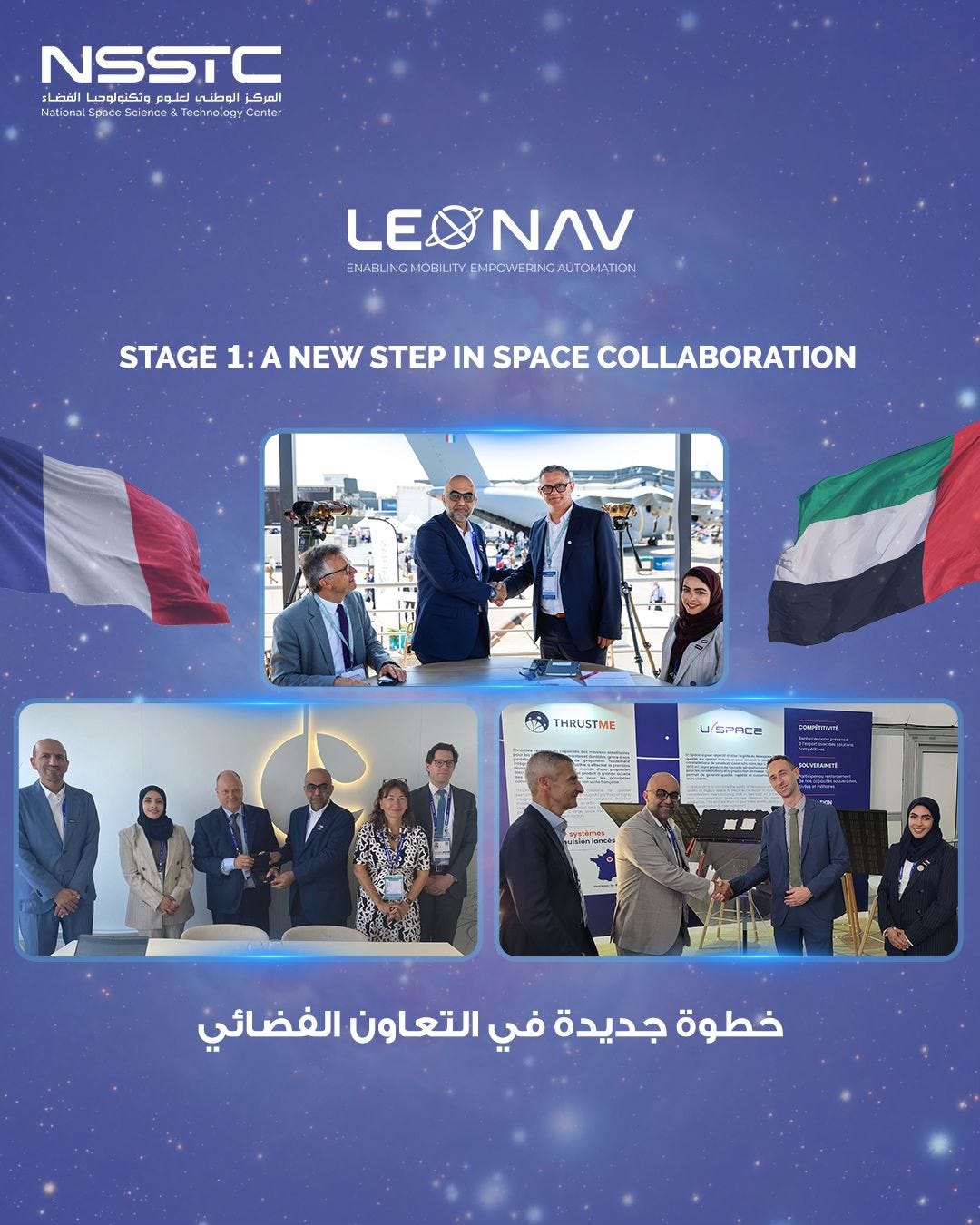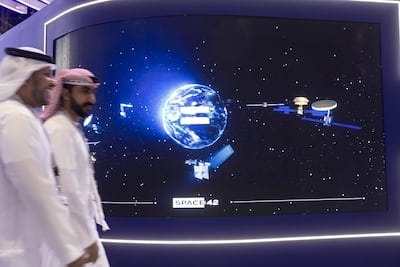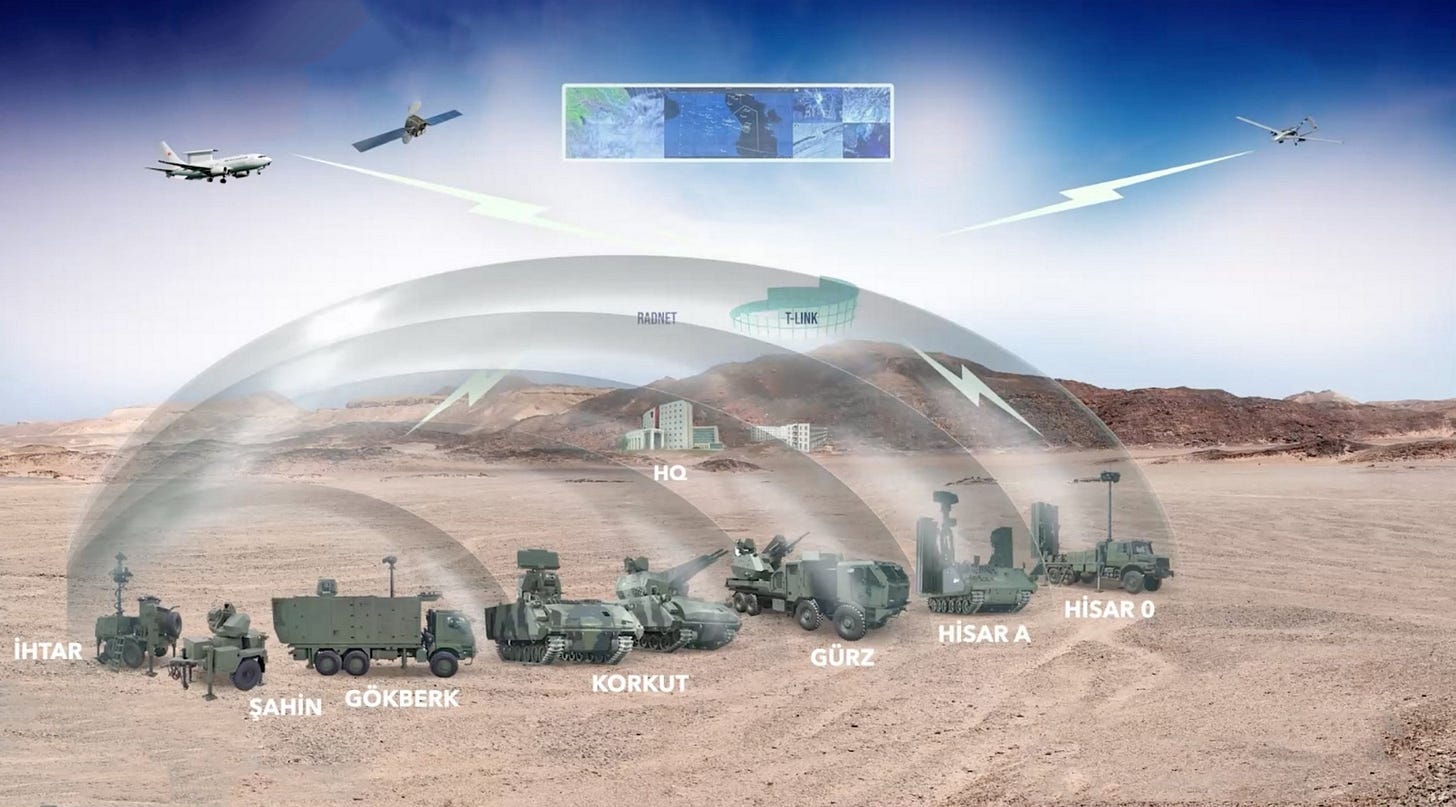Middle East Space Roundup: 16 to 22 June 2025
A summary of all the space news in the Greater Middle East over the past week, brought to you by AzurX

The following are the major space developments in the Greater Middle East region tracked by Middle East Space Monitor over the past week:
Israel-Iran Conflict: The Space Angle
Civil Thermal Imaging Satellites Confirm U.S. Strikes on Iran’s Nuclear Facilities
Thermal satellite data has confirmed U.S. airstrikes on Iran’s key nuclear facilities—Fordow, Natanz, and Isfahan—marking a dramatic escalation in the Iran-Israel conflict and the first direct U.S. military intervention. Detected heat spikes via NASA’s LANCE/FIRMS system align with President Trump’s assertion that the sites were “completely and totally obliterated,” in a coordinated operation with Israel involving B-2 bombers and Tomahawk missiles. The strikes, aimed at dismantling Iran’s nuclear enrichment capacity, signal a strategic shift toward space-based battle damage assessment and underscore the growing integration of orbital surveillance in modern warfare.

Israeli Information Operations Attacks Iran’s Satellite Links Via Cyber Attacks
In a bold integration of cyber and satellite warfare, Israel briefly hijacked Iranian state television broadcasts—an act Tehran attributed to a cyberattack that disrupted satellite transmission—amid escalating kinetic strikes targeting Iran’s state infrastructure. The disruption aired protest footage and calls for civil unrest, leveraging satellite broadcast systems as vectors for psychological operations. As Israel continues to strike symbolic state institutions, including the Iranian state broadcaster and internal security HQ, the conflict increasingly highlights the strategic role of satellite-dependent information systems in modern warfare and regime destabilization.
Satellite Jamming in Arabian Gulf Results in Collision of Shipping Vessels
A collision between the Very Large Crude Carrier (VLCC) Front Eagle and the dark fleet tanker Adalynn off the UAE coast underscores escalating risks from widespread satellite and GPS signal interference in the Gulf of Oman, as nearly 1,000 ships have been affected since Israel’s recent military strikes on Iran. The disruption, including jamming and spoofing of navigation and AIS satellite signals, has severely impacted vessel positioning near the Strait of Hormuz—one of the world’s most critical maritime chokepoints. While authorities have ruled out hostile intent, the incident signals a growing maritime safety challenge amid satellite system degradation in conflict-affected zones.

Israel-Iran Conflict Extends to Space With Hypersonic Weapons & Missile Defense
In a major escalation of the Israel-Iran conflict, Iran has reportedly fired its Fattah-1 hypersonic missile at Tel Aviv—marking the weapon’s first known use and signaling a new phase in regional warfare. Capable of evading advanced missile defense systems through high-speed maneuvrability and trajectory shifts, the Fattah-1 exemplifies a broader trend: the convergence of hypersonic weaponry and space militarization. As space-based assets become critical to reconnaissance, targeting, and missile defense, the growing use of such systems underscores how space is rapidly becoming a contested warfighting domain amid intensifying global strategic rivalries.
U.S. Official Calls for Elon Musk to Offer Starlink for Free in Iran
U.S. special envoy Richard Grenell has publicly appealed to Elon Musk to temporarily provide free Starlink satellite internet access to Iranians facing information blackouts, citing urgent connectivity needs amid ongoing unrest. The request underscores Starlink’s growing geopolitical relevance as a tool for bypassing authoritarian censorship and enabling digital access in contested regions—a role that positions SpaceX as an increasingly influential actor in global information resilience and crisis communications.
UAE Space Developments
UAE’s NSSTC Partners With France to Develop LEONAV LEO Satellite Navigation
At the 2025 Paris Air Show, the UAE’s National Space Science & Technology Center (NSSTC) and France unveiled LEONAV Stage 1, a landmark LEO-based Positioning, Navigation, and Timing (PNT) technology demonstrator. Funded by the UAE Space Agency and involving U-Space, Safran, and the Centre national d'études spatiales (CNES), the mission validates onboard GNSS signal processing, precise time synchronization, and compact payload integration. LEONAV marks a significant advance in UAE-France space collaboration and signals a shared commitment to developing sovereign, resilient navigation capabilities in orbit.
UAE’s Space42 Powers Ahead Months After Bayanat-Yahsat Merger
The UAE’s Space42, formed through the 2024 merger of Bayanat AI and Yahsat, is rapidly emerging as a regional space and AI powerhouse. With strong backing from G42, Mubadala, and IHC, the ADX-listed firm integrates AI-driven geospatial analytics and satellite communications through its Yahsat Space Services and Bayanat Smart Solutions divisions. Anchored by a $5.1 billion UAE government contract and a $7.1 billion backlog, Space42 is pursuing global expansion via direct-to-device connectivity, 5G NTN development with Viasat, and High-Altitude Platform Systems (HAPS) manufacturing through its subsidiary Mira Aerospace. Positioned at the nexus of the space and AI markets, Space42 is aligning closely with UAE national strategies and aims to be a global leader in dual-use, AI-powered space infrastructure.
UAE’s Space42 Releases Thuraya Mobile Broadband Hotspot SATCOM Terminal
The UAE’s Space42 has launched the Thuraya Mobile Broadband Hotspot (MBH), a lightweight, secure satellite terminal offering resilient connectivity for remote operations across EMEA and Central Asia. Operating on the Thuraya network and fully compatible with the forthcoming Thuraya-4 satellite, MBH extends Space42’s position as a Non-Terrestrial Network (NTN) leader by addressing critical coverage gaps for civil government, maritime, and industrial users. With robust security, IP67/IP68 durability, and integration-ready features for asset tracking, emergency response, and IoT, MBH exemplifies Space42’s strategy to deliver AI-enabled, mission-critical satellite communications beyond terrestrial limits.
UAE’s Khalifa University & Space Agency Develop First Satellite Propulsion System
Khalifa University and the UAE Space Agency have activated the UAE’s first domestically developed, precise, and environmentally friendly propulsion system for 6U mini-satellites, marking a significant milestone in national space capability. Developed under the UAE Space Agency’s Mini-Satellite Initiative, the system is now in its final pilot phase and is slated for in-orbit demonstration by 2026. This achievement underscores the UAE’s growing competence in sustainable space technologies and strengthens its ambition to localize critical satellite subsystems for future low-Earth orbit missions.
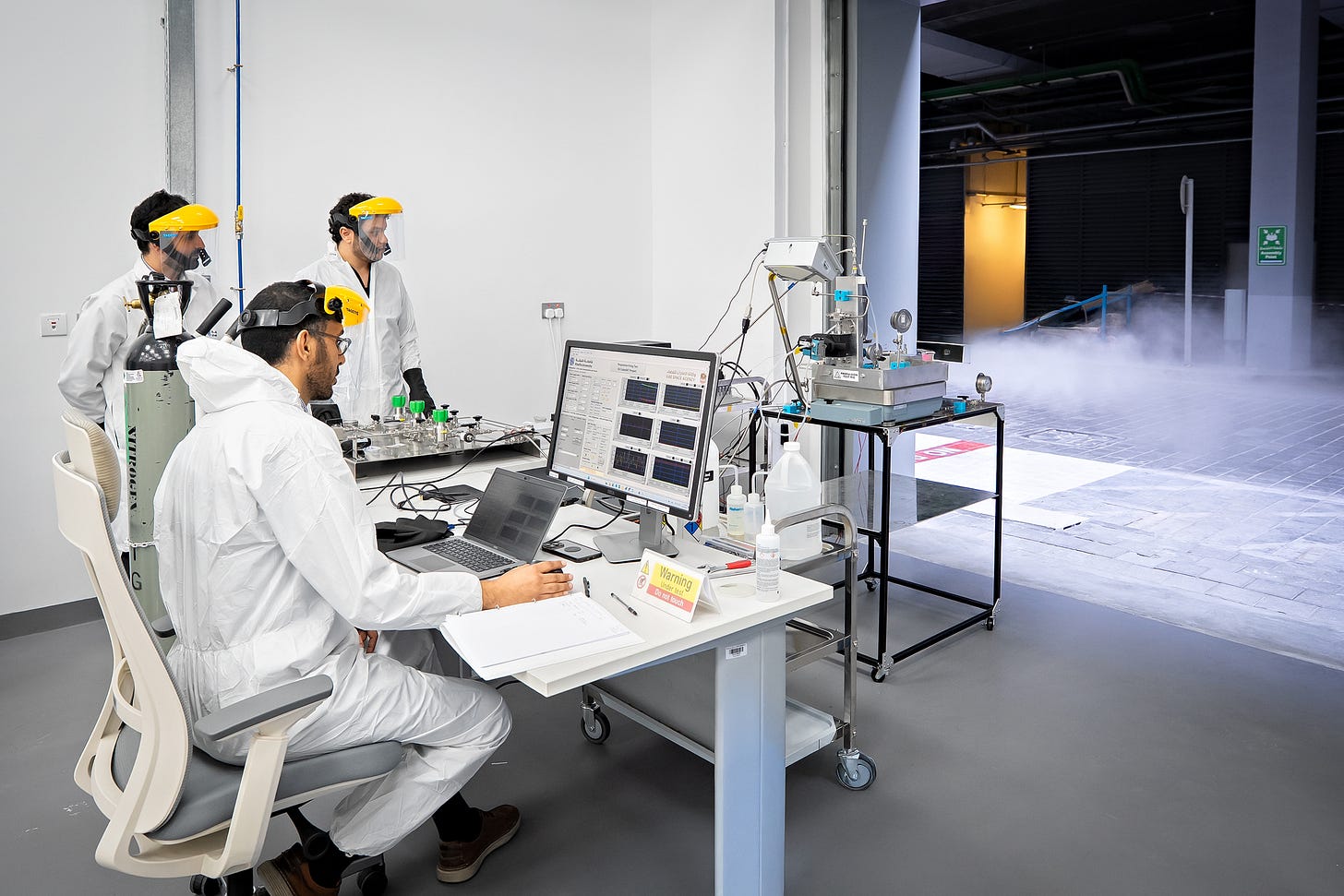
UAE’s UAE University Students Selected by JAXA for ISS Experiment
The Japan Aerospace Exploration Agency (JAXA) has selected a student team from UAE University, nominated by the Mohammed Bin Rashid Space Centre (MBRSC), to participate in the prestigious Asian Try Zero-G 2025 program aboard the International Space Station. Their experiment on harmonic motion and damping effects in microgravity was chosen from over 500 international entries, highlighting UAEU's rising profile in space science research. This milestone reflects the UAE’s expanding academic footprint in space exploration and strengthens its reputation as a regional hub for scientific innovation.
UAE’s Space Point Signs MoU With UK’s ART for Regional Space Education
UAE-based edtech start-up Space Point has signed an MoU with UK firm Advanced Rocket Technologies (ART) to advance STEM education and space technology development across the Middle East and North Africa (MENA) region. Under the Mohammed Bin Rashid Innovation Fund’s (MBRIF) accelerator program, Space Point will collaborate with ART on space-focused educational experiments and future satellite launches via ART’s reusable suborbital rockets. The partnership supports the UAE’s ambition to become a regional hub for practical space education, equipping students with hands-on experience through Space Point’s SatKit platform, while contributing to the development of a comprehensive Middle East space ecosystem.
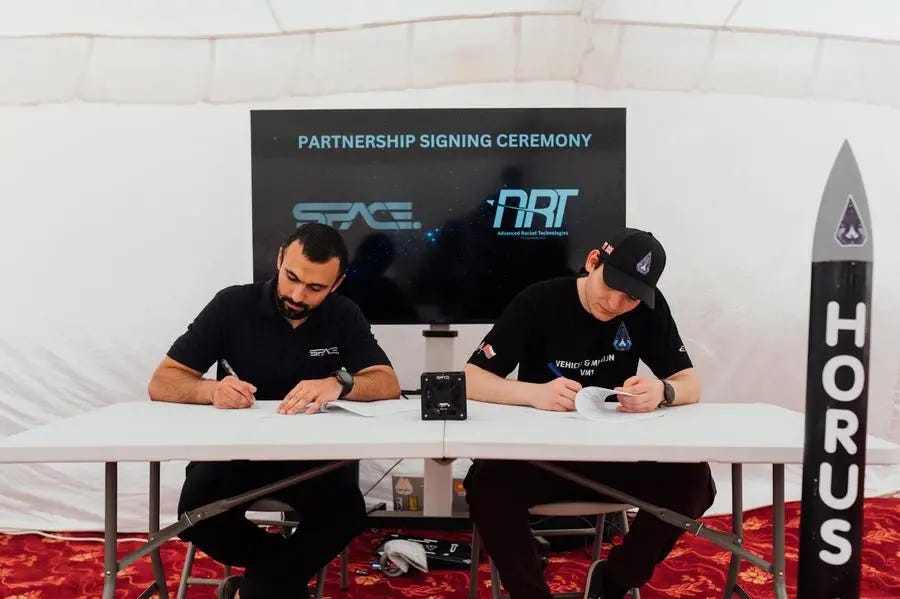
U.S. Government Announces Grants to Support U.S.-UAE Space Exploration
The U.S. Mission to the UAE has announced its 2025 Annual Program, offering grants of $25,000–$200,000 for projects advancing U.S.-UAE collaboration in areas such as space exploration, frontier technologies, entrepreneurship, and cultural diplomacy. Timed to coincide with America’s 250th anniversary in 2026, the program aims to deepen bilateral ties through initiatives like space camps, AI-focused hackathons, and university-led joint research. Emphasizing U.S. leadership in space and innovation, the funding supports a wide range of stakeholders—from tech startups and students to academic institutions and VC firms—across all seven emirates.
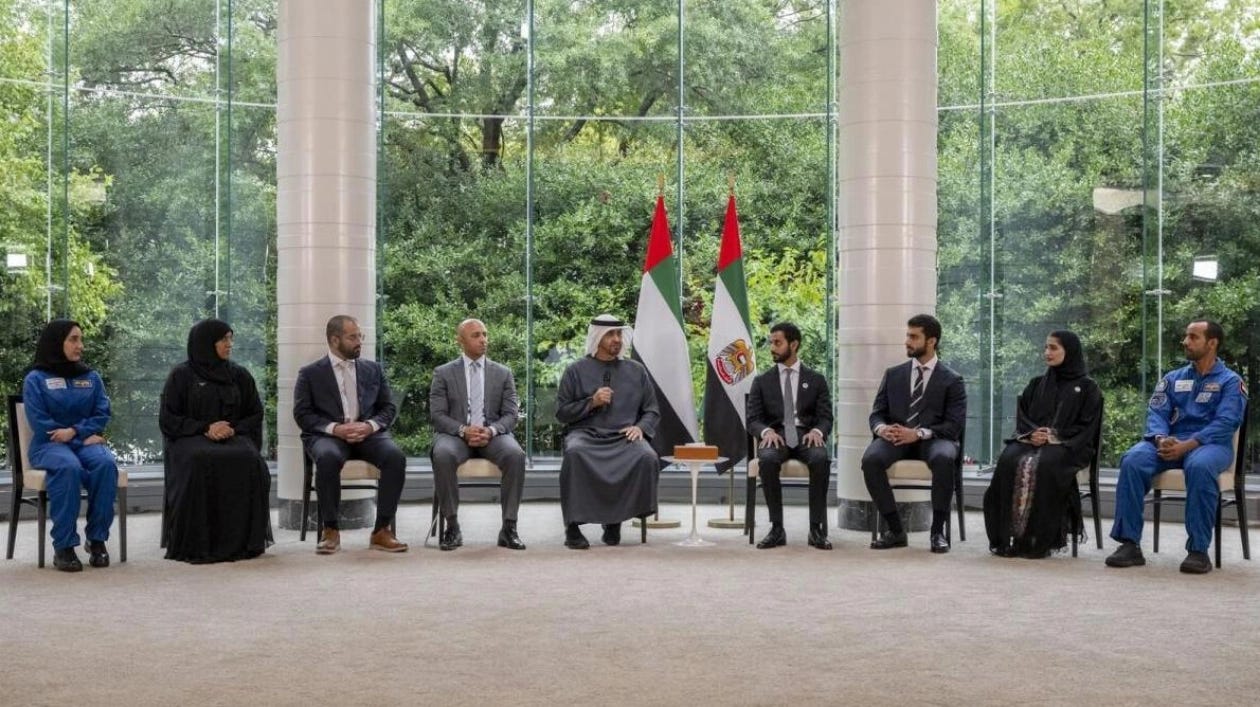
UAE-Based Agility Beyond Space Appoints Hussein Oteifa as MENA MD
UAE-based Agility Beyond Space (ABS - formerly known as Asia Broadcast Satellite) has appointed Hussein Oteifa as Managing Director for the MENA region, signalling a strategic push to deepen market presence and partnerships across satellite and enterprise connectivity domains. With over 30 years of experience in GEO and MEO satellite services, government programs, and cloud-based solutions, Oteifa will lead ABS’s regional operations from Dubai, aligning growth efforts with the company’s global commercial strategy.
Türkiye Space News
Türkiye’s Steel Dome Missile Defense System Requires Satellite Navigation Constellation
Türkiye’s ambitious Steel Dome air defense system, slated for completion by 2028, will feature multi-tiered capabilities supported by domestically developed radar, EW, and missile technologies—but a critical enabler will be space-based infrastructure. Currently lacking its own global satellite navigation system, Türkiye is accelerating efforts through Aselsan and the TÜBİTAK Space Technologies Research Institute to launch a sovereign satellite navigation constellation by 2030. This development is vital for autonomous targeting, secure communications, and resilience against NATO-linked vulnerabilities, reflecting Ankara’s broader strategy to decouple from external satellite dependencies in future conflict scenarios.
Türkiye’s Hybrid Rocket Test Lays Foundation for Upcoming Lunar Mission
Türkiye has completed production and space compatibility tests of a domestically developed hybrid propulsion system for its upcoming lunar mission, a key milestone in its drive for technological sovereignty in space. Led by the Turkish Space Agency and TUBİTAK UZAY, the mission will deploy a spacecraft powered entirely by homegrown systems—including guidance, propulsion, communication, and scientific payloads—to reach lunar orbit and collect high-precision data. The hybrid rocket engine, developed by DeltaV, recently achieved a national altitude record of over 200 km, underscoring Türkiye’s rising engineering capacity and ambition to position itself as a credible space power.
Türkiye’s Türksat-4A Satellite Starts Broadcasting Syria’s Al Ikhbariah TV
Türkiye and Syria have launched a new phase of regional cooperation with the broadcast of Syria’s state-run Al-Ikhbariyah TV via Türksat-4A, marking a strategic move in media diplomacy and digital infrastructure support. Announced by Türkiye’s Minister of Transport and Infrastructure, Abdulkadir Uraloğlu, the initiative signals broader collaboration in digital transformation, public service delivery, and post-conflict reconstruction. With Türksat’s proven role in Türkiye’s digital development, the partnership aims to export this model to Syria, integrating broadcasting, data security, and disaster communications into a sustainable roadmap for regional connectivity and stability.
Türkiye’s Transport Minister: Turksat-7A Set to Launch in 2029
Türkiye’s Minister of Transport and Infrastructure, Abdulkadir Uraloğlu, has positioned the upcoming Türksat-7A satellite, set for launch in 2029, as a cornerstone of the country’s digital transformation and a critical asset for national security. Building on the recent success of Türksat-6A, the new satellite will replace the aging Türksat-3A and deliver enhanced data capacity, wider coverage, and greater operational flexibility. Emphasizing that future conflicts will be shaped by dominance in space, Uraloğlu underscored the strategic role of satellite technologies in intelligence, communication, and defense, aligning Türkiye’s growing satellite capability with its broader geopolitical ambitions and global competitiveness.
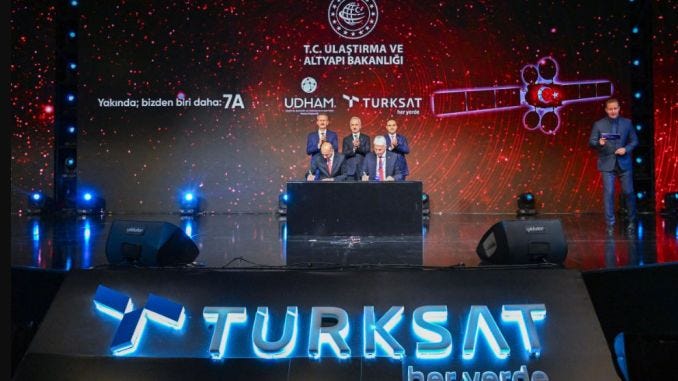
Saudi Arabia Space Developments
Saudi Arabia’s STC Partners With ST Engineering iDirect to Advance SATCOM Infrastructure
ST Engineering iDirect has partnered with solutions by stc to advance Saudi Arabia’s satellite communications infrastructure in line with Vision 2030, enhancing national digital transformation efforts. The collaboration upgrades ground infrastructure with software-defined, future-ready satellite technologies to serve key sectors including government, enterprise, and telecom. Positioned to support the Kingdom’s fast-growing digital economy—projected to reach $90.25 billion by 2030—the partnership integrates local operational capabilities with resilient, scalable satellite connectivity to strengthen Saudi Arabia’s digital and strategic infrastructure.
Gulf Countries Celebrate 40th Anniversary of Saudi Arabia’s Prince Sultan Spaceflight
Canadian physician and commentator Dr. Farhan M. Asrar notes in Gulf News that June 2025 marks the 40th anniversary of Saudi Arabia’s Prince Sultan bin Salman Al Saud’s historic 1985 spaceflight aboard NASA’s Space Shuttle Discovery, a defining moment that catalyzed Arab participation in space exploration. As the first Muslim and Arab in space, Prince Sultan’s mission—undertaken during the launch of Arabsat’s second satellite—combined scientific research with deep personal faith, symbolizing both technological ambition and cultural identity. His achievement laid the foundation for today’s space leadership in the Gulf, notably inspiring the UAE’s growing program and astronauts like Sultan Al Neyadi. His legacy continues to shape regional space aspirations and institutional development.
Oman Space News
Oman Students Visit NASA’s Johnson Space Center in the United States
Student teams from Oman shortlisted for the NASA Space Apps Challenge 2024 have begun a high-profile scientific exchange in the U.S. with a visit to NASA’s Johnson Space Center, organized by the U.S. Embassy in Oman and the University of Technology and Applied Sciences. The program reflects Oman’s strategic push to cultivate STEM talent and global scientific engagement, offering participants exposure to advanced space technologies and historic missions. By connecting youth to NASA’s legacy and future—particularly through immersive experiences tied to Artemis—the visit aligns with Oman’s broader goal of fostering an innovation-driven economy and deeper integration into the global space community.
Further Details on the Oman-Bahrain Earth Observation Collaboration
Oman’s Oman Lens, in collaboration with the Bahrain Space Agency and China’s Star.Vision, has launched the AI-powered payload OL-1—marking the first Omani-Bahraini partnership in space. The mission, which uses advanced artificial intelligence to detect and classify clouds in satellite imagery, represents a significant regional milestone in the application of AI for Earth observation. Launched aboard a Chinese Lijian-1 rocket in late 2024, OL-1 has completed over 5,000 hours in orbit and forms the first step in Oman Lens’s planned 20-satellite constellation aimed at monitoring landscapes, infrastructure, and natural resources across the Arab world.
Other Regional Space Developments
AzurX-Atlantic Council Report on GCC States and National Security Space Released
The space industry’s rapid evolution has enabled broader global participation, with the Gulf Cooperation Council (GCC) countries emerging as influential players through strategic investments in advanced manufacturing and digital infrastructure. AzurX’s new report, produced in cooperation with the Atlantic Council, highlights how GCC states are leveraging space programs to reshape geopolitical alliances, attract international partnerships, and accelerate dual-use technology adoption—positioning the region as a rising force in the global space economy. To read the full report, contact AzurX at space@azurx.com.

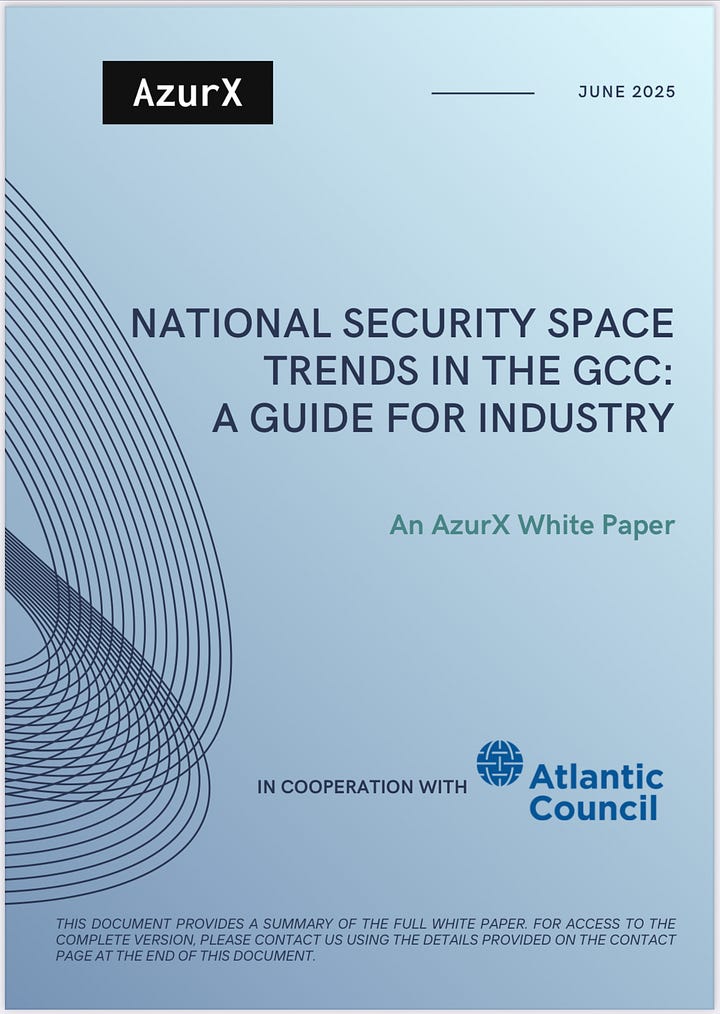
Bahrain Space Agency Completes CO2 Satellite Sensor Development With the UK
The Bahrain Space Agency has completed the second phase of its UK-funded satellite payload project to monitor carbon dioxide, developed in partnership with the University of Leicester and Geospatial Insight. The £1.4 million initiative, under the UK Space Agency’s International Bilateral Fund, saw Bahraini engineers co-develop a hyperspectral oxygen camera and CO₂ sensor to enhance regional greenhouse gas monitoring capabilities. The effort underscores Bahrain’s strategic push to expand its technical expertise and data services in climate monitoring, with plans for a dedicated satellite constellation to support Gulf-wide carbon tracking and emissions policy development.
China’s GalaxySpace LEO SATCOM Operator Claims Inroads in Saudi Arabia & UAE
China’s GalaxySpace is rapidly expanding its global low-Earth orbit (LEO) broadband satellite partnerships, with claimed yet unverified inroads in the United Arab Emirates and Saudi Arabia. As of 2025, the company—China’s first commercial space unicorn—has established multi-tier collaboration agreements across the Gulf, including experimental broadband satellite integration in the UAE and Saudi Arabia to support remote connectivity, education, and telemedicine. These partnerships position the Gulf states as early adopters of next-generation satellite internet services, aligning with their national digital transformation agendas and signaling deeper technological ties with China in the space sector.
Egypt’s NARSS Inaugurates ISO-8 Clean Room for Satellite Manufacturing
Egypt’s National Authority for Remote Sensing & Space Sciences (NARSS) has inaugurated a state-of-the-art ISO 8 clean room for the assembly, integration, and testing of small satellites, marking a major advancement in the country’s satellite manufacturing capabilities. The facility enables NARSS to support CubeSat, CanSat, and microsatellite projects domestically, reducing reliance on foreign infrastructure while fostering collaboration with universities, aerospace firms, and international partners. Positioned as a hub for satellite R&D, training, and innovation, the clean room bolsters Egypt’s ambitions to become a regional leader in space technology and workforce development.
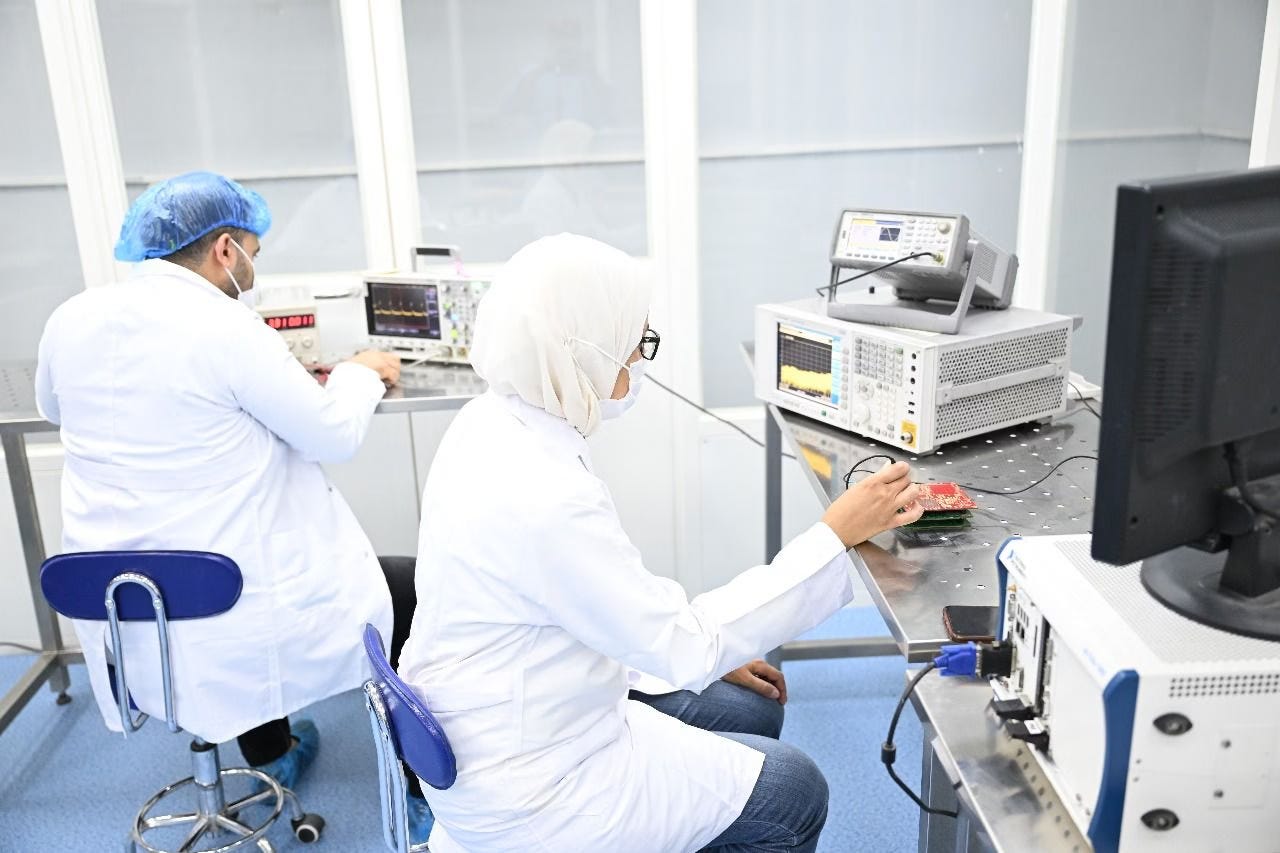
Opinion: Europe & Gulf States Should Partner for Sovereign Space Autonomy
In Arabian Business, Bogdan Gogulan of NewSpace Capital writes that Europe’s strategic autonomy hinges on investing meaningfully in space—now an essential pillar of security, economic resilience, and technological competitiveness. Despite having world-class engineers and promising dual-use space companies, Europe lags behind the U.S., China, and increasingly, the Gulf states, where countries like the UAE and Saudi Arabia are rapidly scaling their space sectors with over $25 billion invested. A deeper Europe–Middle East space alliance would unlock mutual gains: funding and test environments for Europe, and expertise and industrial depth for the Gulf—strengthening both regions’ positions in the global space economy.
Be sure to catch up with space activities in the region in the next edition of Middle East Space Monitor’s space roundup!





